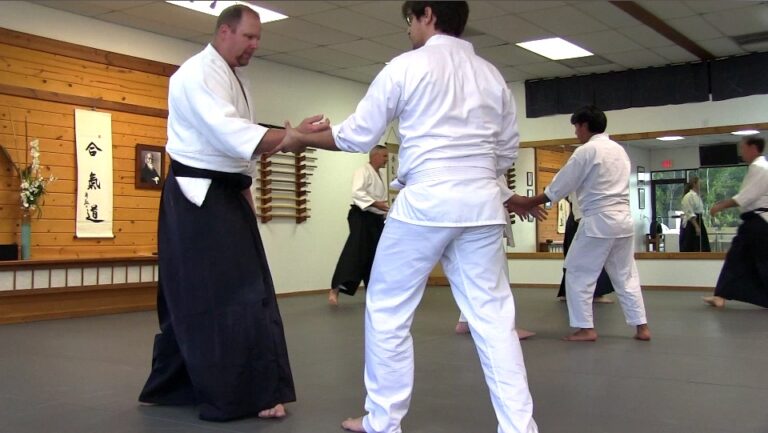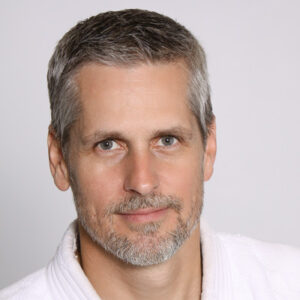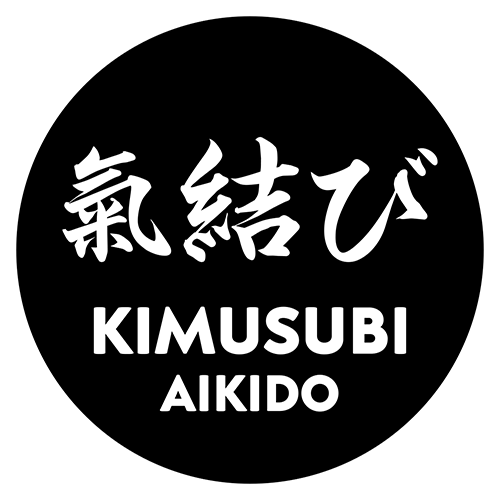OUR STYLE OF TRAINING

Aikido dojos have different philosophies and teaching methods.
Learn about our dojo and our training philosophy.
Aikido is a spiritual pursuit through a physical means of practice. It teaches us to release our fear and embrace the natural order of things. With this – as with any physical activity – pursuit comes the chance of injury. It is the responsibility of each student to learn the role of “uke” (receiver of the technique) to the best of their ability. However, it is the responsibility of every student to understand the limitations of their training partner and to respect each person’s experience level.
Our students rarely experience injuries, particularly those that result from forcing technique, anger, or ego. It is of the utmost importance that this remains a tenant of our dojo and aikido practice.
Only train at a level your experience can handle safely.
Take the utmost care of your training partners both on and off the mat.
Safety is always first in our training.
So much is discussed about aikido as a true Japanese fighting art, or “Budo”. What does it mean to practice a “real” martial art? We believe that our practice can be serious and our technique effective without the need for excessive discussion, ego, intimidation or posturing. The martial effectiveness of aikido is devastating when fully applied.
While injuries from punches and kicks will heal, concussions and broken bones have the potential to permanently maim and disable. For this reason our practice must be tempered and controlled. There is no place in aikido for testing effectiveness at the expense of others.
The term, “mushin”, is Japanese for “no mind”. The idea is that a warrior does not approach any situation with a preconceived notion of what they know or what is going to happen next.
Situations, techniques, experience levels change with every new encounter. We treat our paths in aikido as opportunities to learn and grow, not merely to exercise what we already think we know. Bring humility and enthusiasm to your practice always.
WHY KIMUSUBI AIKIDO DOJO?
Here are some aspects of our dojo that are unique:
Our dojo is not a huge commercial enterprise with hundreds of students. Most of us have trained together for many years and are bonded by our practice. When new students join, they are welcomed into our extended family. We enjoy social events together and have built genuine friendships through our pursuit of aikido. As with any dojo, students come and go. However, once you are a part of our group you always remain a part of our dojo family.
Our school charges monthly training dues and annual fees for insurance. All fees are practical in nature and serve to ensure that we all have a place to practice. Our instructors do not derive income from the dojo and they are essentially students themselves sharing their knowledge as they continue their own aikido training. Donations and fees are received as needed for seminars, special events, and normal dojo maintenance. Financial assistance is also available to those in need.
While its difficult in our modern era to form direct student-teacher relationships, our dojo remains small and dedicated to changing lives through aikido practice. “Narrow and deep” is a term we like to use to describe our student and teacher, kohai and sempai, relationships. Considering how many students come and go in the lifetime of a school, a teacher never knows who is the hidden gem that will one day become a teacher themselves. Rather than produce scores of “black belts”, we strive to produce scores of quality individuals who truly realize the value of aikido, both in the context of self-protection and realization, and in the broader social sense of peaceful interaction with others.
Many martial arts schools in the West – aikido and otherwise – create false pretenses and rules of etiquette that are simply a means with which to aggrandize their teachers. These schools believe they are being “traditional” by declaring strict guidelines and hierarchies that have little to do with actual Japanese culture or aikido training.
Having trained in Japan, with actual Japanese teachers, our teachers strive for authenticity and honesty with all students. You will not find an over emphasis in titles, social gestures or any other expected subjugation in our dojo. We practice with the goal of producing respectful and knowledgeable students, not groupies or cult followers. All students have value and are treated as such.
OUR Sensei

Dan Dease
- Chief Instructor
- |
- 5th Dan Aikikai
While training at the Aikikai Hombu Dojo in Tokyo in 2001, Dan Sensei was introduced to the Aikido of Seishiro Endo Shihan and he found an immediate connection. Dan began following Endo Sensei at various seminars in Europe, Japan, and later in America.
To further explore this unique path of Aikido, Dan began inviting Endo Sensei’s senior students to the USA for seminars and workshops to spread his personal message of Aikido.
- 1990 – Begins Aikido training with Robert Lampp Sensei at the Winter Park High School Aikido Club under Edward B. Baker Sensei (5th Dan Aikikai)
- 1995 – Receives his shodan from Baker Sensei
- 1996 – Joins Shindai Aikikai Dojo under Dennis Hooker Sensei (7th Dan, ASU), under the direction of Mitsugi Saotome Shihan
- 1999 – Receives his nidan directly from Saotome Sensei
- 2002 – Receives his sandan directly from Saotome Sensei
- 2004 – Establishes the Central Florida Aikikai, an independent Aikido group to follow Endo Sensei’s teaching
- 2013 – Central Florida Aikikai becomes Kimusubi Aikido, inspired by Endo Sensei emphasis on connection in Aikido
- 2014 – Tests for and is promoted to 4th dan by Jan Nevelius Shihan, a senior student of Endo Shihan
- 2016 – Hosts Endo Shihan’s first visit to Orlando, Florida
- 2020 – Awarded 5th dan by the Aikikai Hombu Dojo upon the recommendation of Endo Shihan
